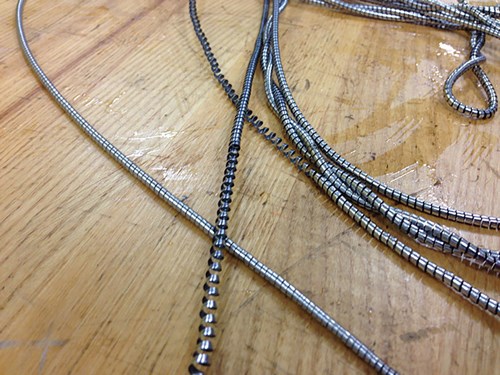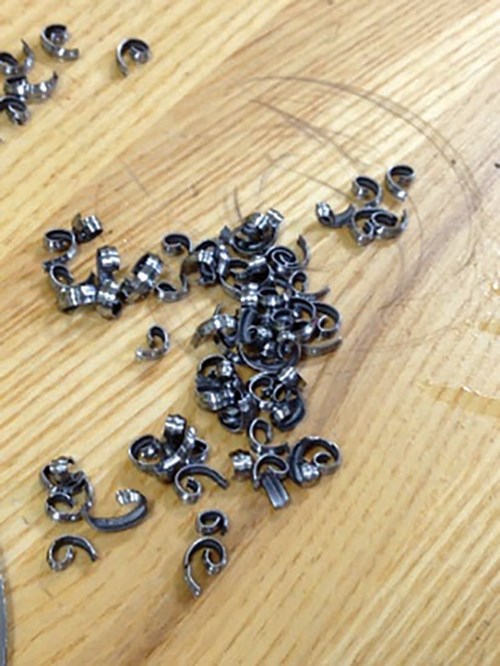Craftsman's Cribsheet: What Does Ductility Mean?
The ability of a material to deform plastically without fracturing is called ductility.
The ability of a material to deform plastically without fracturing is called ductility. In the materials usually machined in our shops, ductility is measured by determining the percent of elongation and the percent reduction of area on a specimen during a tensile test.
Ductility is often indicated by chip control issues in certain steels, as the chip readily deforms, but does not separate from the workpiece. This can result in persistent burrs attached to the work.
Featured Content
Long necklace chips are another sign of ductile materials in machining.
Short chips curled into “6s and 9s,” showing a bit of heat discoloration, are typical of less ductile materials and ductile materials machined at proper parameters using chipbreakers and high pressure coolant delivery.
In machining practice, we prefer materials that are “crisp” rather than ductile. In order to succesfully deal with ductile materials, strategies such as chip-control features on inserts, wiper-style inserts, through-tool coolant, interrupted cuts, chipbreakers and high pressure coolant can be considered. Dialing in the appropriate feeds, speeds and depth of cut are crucial, too.
All Craftsman’s Cribsheets are available for viewing and download at short.productionmachining.com/cribsheets.








